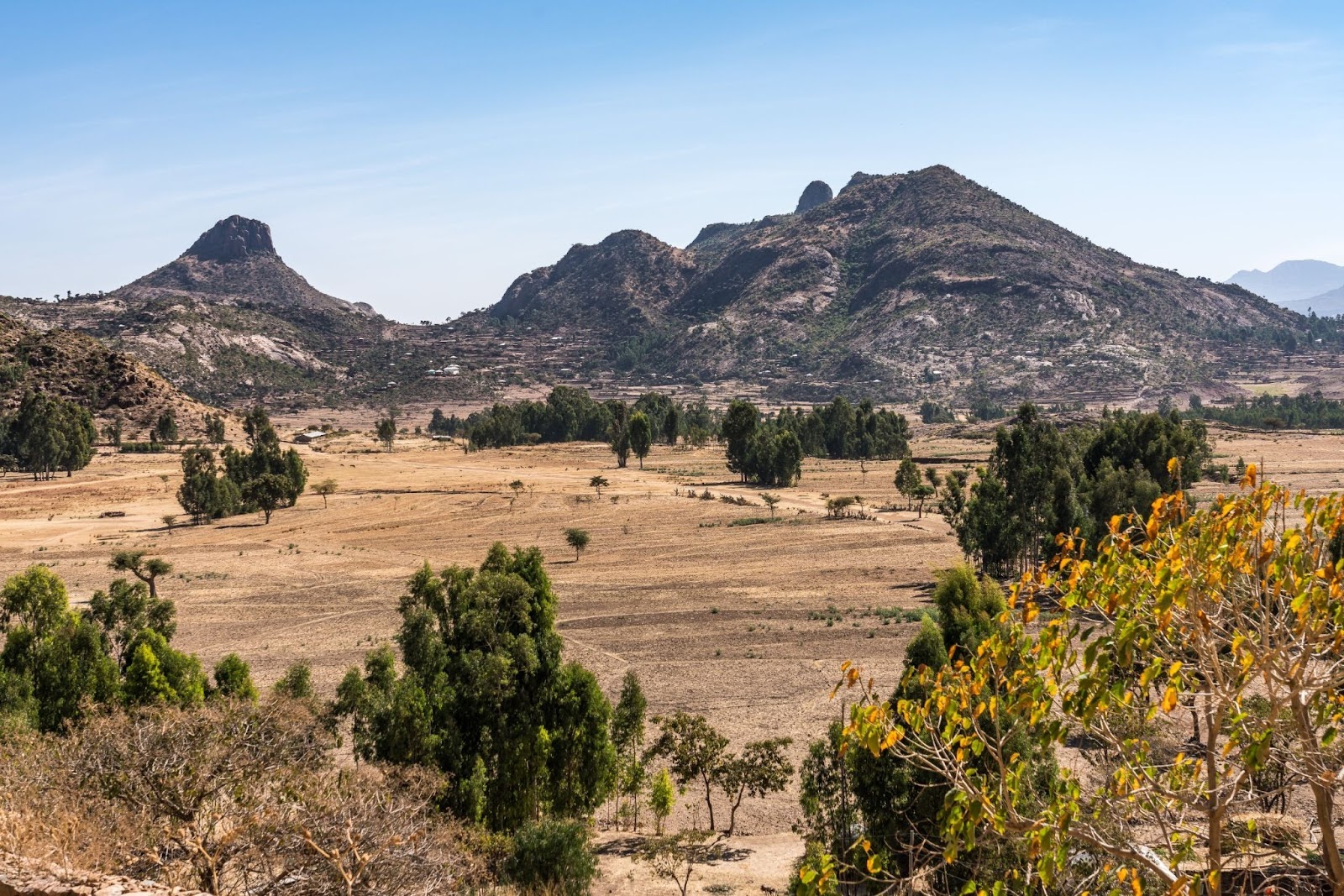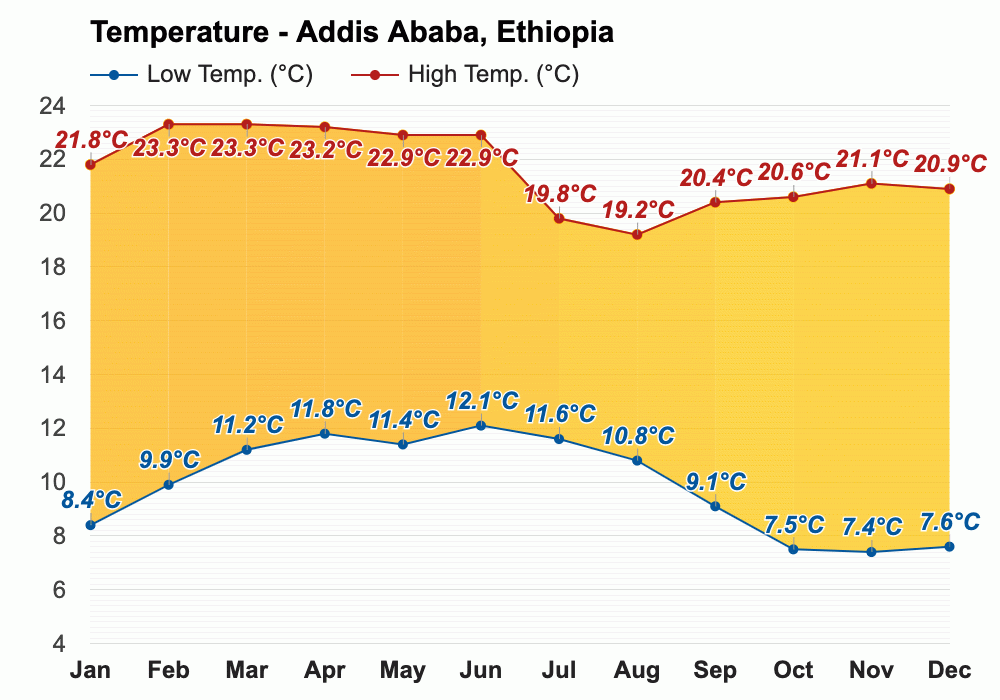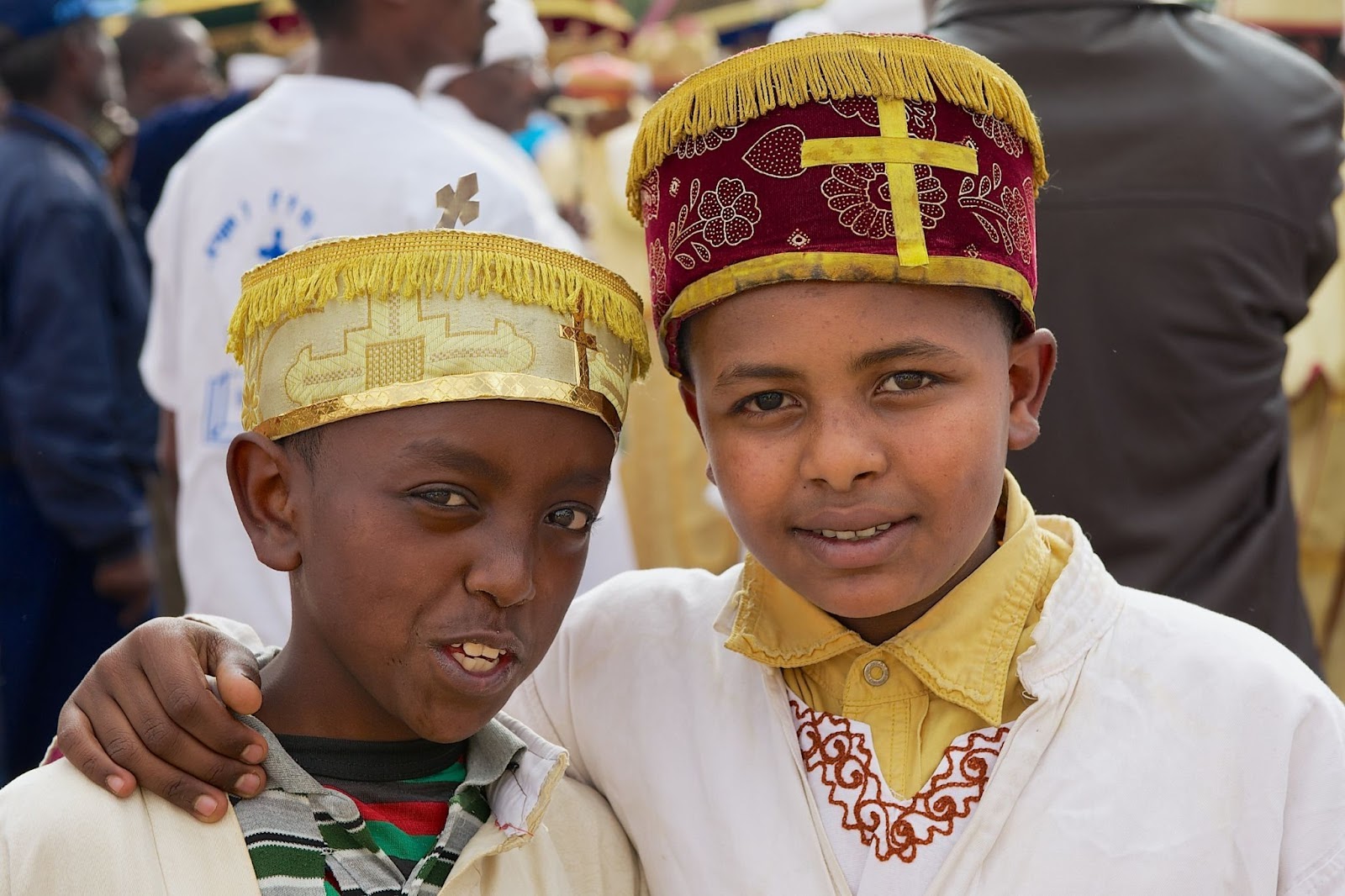Ethiopia, a country with a rich tapestry of history, culture, and natural beauty, offers travelers a unique and captivating experience. From ancient churches carved into the ground to the stunning landscapes of its national parks, Ethiopia has a lot to offer. If you're planning to travel to Ethiopia for tourism, business, or any other purpose, obtaining a Ethiopia visa is a necessary step to ensure your entry and stay in the country.

However, deciding when to visit can be a crucial factor in ensuring you have the best possible experience. In this comprehensive guide, we'll break down the best times to visit Ethiopia by delving into each month, the regions' weather, temperature, and climate, and highlight the country's unique festivals, so you can plan your trip with all the essential information in mind.
When Is The Best Time To Visit Ethiopia?
Ethiopia's climate and weather can vary significantly from month to month, so it's crucial to choose the right time for your visit. Let's take a closer look at each month to help you plan your Ethiopian adventure.

Weather In Ethiopia In January
High Season: January is considered high season in Ethiopia, making it a prime time for a visit, especially if you're keen on wildlife watching.
Temperature: Expect clear skies and warm days. In the capital city of Addis Ababa, temperatures typically hover around 17°C, with an average high of 23°C and an average low of 9°C. While not scorching, it's certainly comfortable for outdoor activities.
Rainfall: Addis Ababa sees an average of just three days of rain, totaling 13 mm of precipitation. This means that you'll enjoy mostly dry days.
Recommendations: This is an ideal time for exploring Ethiopia's historic sites and national parks, as the weather is pleasant and conducive to outdoor adventures.
Weather In Ethiopia In February
Ideal for Travel: February offers near-perfect weather across Ethiopia, making it a fantastic time for sightseeing.
Climate: In the capital city, Addis Ababa, the average temperature is 23°C, and the skies are clear approximately 82% of the time. Rainfall is rare, making it an excellent time to explore.
Exceptions: Some areas, such as Lalibela, may experience occasional showers, with an average of 75mm of rain over nine days. However, this is unlikely to significantly disrupt your plans.
Recommendations: February is a great time for cultural exploration, as the weather is pleasant and dry, allowing you to visit historical sites without any weather-related hindrances.
Weather In Ethiopia In March
Great Time to Go: March is another fantastic month to visit Ethiopia, with favorable weather conditions for a variety of activities.
Temperature: Addis Ababa typically enjoys clear weather with an average temperature of 24°C. Meanwhile, Bahir Dar, located near Lake Tana, offers balmy conditions with an average temperature of 28°C. Humidity remains low, enhancing your comfort during your visit.
National Parks: March is an excellent time for visiting Ethiopia's national parks and exploring its diverse wildlife. Awash National Park, for instance, experiences temperatures around 30°C, making it a great destination for nature enthusiasts.
Cautions: While most of Ethiopia enjoys pleasant weather in March, some regions may start to experience higher temperatures.
Weather In Ethiopia In April
Low Season Begins: April marks the transition from high to low season, with the rainy season commencing in the southern parts of the country.
Conditions: In the capital city, Addis Ababa, temperatures still hover around 24°C, and you can enjoy the sunshine with a tolerable level of humidity. This makes it a comfortable time for outdoor activities and exploration.
Exceptions: In some areas, such as Arba Minch, there's a significant amount of rainfall, and the average temperature is around 27°C. This may not be as comfortable for travel.
Recommendations: Despite the start of the low season, April is a suitable time to travel to most parts of Ethiopia. You can still enjoy pleasant weather in many regions, particularly historical and cultural sites.
Weather In Ethiopia In May
Low Season Continues: May may not be the most ideal time to visit Ethiopia, as the country transitions further into the low season.
Conditions: The country experiences less visibility for wildlife spotting, overcast conditions, and an increase in both heat and humidity. However, some places are still suitable for exploration.
Specifics: In Axum, the average temperature is around 25°C, and there's some rainfall in May. Gondar sees similar conditions with an average temperature of 26°C and around half the month being rainy. Lalibela, on the other hand, offers more pleasant conditions with temperatures at around 22°C, less rainfall, and moderate humidity at 52%.
Considerations: If you're interested in historical and cultural sites, Lalibela may be a more comfortable destination in May. However, for wildlife enthusiasts, other months might offer better opportunities.
Weather In Ethiopia In June
Low Season Continues: June is still considered part of the low season in Ethiopia. However, this doesn't mean you can't travel and explore the country.
Weather: In Addis Ababa, temperatures typically range from 21°C to 25°C. While the weather is warmer, you should be prepared for some rain, with 141 mm of rainfall over 14 days in the capital. This is a relatively rainy month, so consider this when planning your activities.
Alternatives: Bahir Dar, located near Lake Tana, experiences relatively dry weather, with an average high of 28°C. However, the situation worsens as you move toward July.
Recommended Destination: If you're looking for a place with more stable conditions, Yangudi Rassa National Park is relatively dry in June, with about six days of rainfall and temperatures ranging from 24°C to 29°C. This park offers excellent opportunities for nature and wildlife enthusiasts.
Weather In Ethiopia In July
Ethiopia in July is wet. There's a significant amount of rainfall during this month, so be prepared for downpours and storms.
Conditions: Addis Ababa sees just an 8% chance of sunshine and a 21% chance of storms. The average temperature hovers around 21°C. This can be a challenging time for outdoor activities.
Challenges: Gondar experiences even more rain in July, boasting around a 95% chance of rain over 29 days. Additionally, Gondar has an 85% humidity level, making it an unfavorable time to visit.
Options: If you still plan to travel to Ethiopia in July, Jijiga offers slightly better weather conditions compared to some other regions. The situation improves from June, with fewer rainy days and warmer temperatures, averaging around 21°C.
Weather In Ethiopia In August
August is most definitely the middle of the low season in Ethiopia. It's a time of uncomfortable heat and heavy rainfall in some regions, making it a less ideal period for travel.
Weather in August: The conditions in the capital city of Addis Ababa are relatively challenging, with an average temperature of 18°C and an expectation of 100% rainfall over every one of the 31 days in August. This means you can anticipate heavy and persistent rain throughout the month.
General Outlook: The situation is similar throughout the country, with the exception of Jijiga, which experiences less extreme weather conditions compared to other regions.
Considerations: It's important to note that August is generally not the best time to visit Ethiopia. The heavy and frequent rainfall, along with the uncomfortable heat in some lowland areas, can make travel less enjoyable.
Weather In Ethiopia In September
Ethiopia begins to ease out of the heavy rains of August and marks the beginning of the end of the low season. However, there's still a considerable amount of rain to contend with in various regions.
Weather in September: In Addis Ababa, the average temperature is around 19°C, with an average of 75% rainfall over 22 days. While the situation is improving, you may still experience rain during your visit.
Regional Variations: In Lalibela, conditions are also improving, with approximately half the month experiencing rainfall and humidity at around 60%. However, the Laka Tana region still sees relatively wet conditions, with an average of 80% rainfall over 24 days. The temperature remains relatively mild at 23°C.
Considerations: While September marks a transition out of the low season, it's important to note that rainfall can still be a factor during your visit. Plan your activities accordingly.
Weather In Ethiopia In October
October heralds the start of the shoulder season in Ethiopia. After the heavy rains of the previous months, the country begins to turn green, with wildflowers starting to bloom and grasses flourishing.
Highlights: This is a great time of year to begin trekking in Ethiopia. The number of visitors is also fewer compared to high season, which may be a favorable aspect of your visit.
Weather: Addis Ababa sees temperatures of 22°C, and the skies are clear and sunny approximately 78% of the time. Only half the month sees rainfall, making it a good time for outdoor activities.
Regional Variations: In Axum, rainfall is minimal, with only around six days on average affected by precipitation. The temperature in Axum typically reaches 21°C. Awash National Park offers pleasant weather with an average temperature of 26°C and a decreasing amount of rainfall.
Advantages: October is an ideal time for hiking and outdoor adventures, as the weather is favorable and the natural beauty of Ethiopia is at its peak.
Weather In Ethiopia In November
November is a good time to visit Ethiopia. It is still considered part of the shoulder season, but the sunny skies and generally dry weather make it great for trekking, wildlife spotting, and cultural exploration.
Conditions: In Addis Ababa, you can expect mostly bright and sunny weather, with an average temperature of 19°C. Axum offers similar conditions, with just a few days affected by rain. Gondar also experiences excellent weather.
National Parks: If you're interested in exploring Ethiopia's national parks, the Simien Mountains National Park has the perfect climate for your adventures in November.
Recommendations: November is an excellent time for a multi-faceted Ethiopian experience, with favorable conditions for a variety of activities.
Weather In Ethiopia In December
With much less rainfall as the country heads into high season, December is one of the best times to visit Ethiopia. The temperatures throughout the country are not too high, making it a pleasant time to explore.
Conditions: In the capital city of Addis Ababa, the average temperature is around 19°C. This temperature range is comfortable for outdoor activities and sightseeing.
Desert Region: December is a great time to visit the desert region of the Danakil Depression in the northern part of the Afar Triangle. It's not as hot as it would be at other times of the year, making your experience more comfortable.
Advantages: Since it's not yet the peak of the high season, December offers the benefit of fewer crowds compared to the following month.
Festivals to Celebrate in Ethiopia
Ethiopia is a country rich in culture and traditions, and one of the best ways to immerse yourself in its vibrant heritage is by participating in its diverse festivals.

From religious celebrations to historical commemorations, Ethiopia offers a unique festival calendar that can enhance your travel experience. Let's explore some of the most significant festivals in Ethiopia that occur throughout the year.
Spring Festivals in Ethiopia
Spring in Ethiopia brings forth vibrant festivals that celebrate the country's rich cultural and historical heritage. Ethiopian Patriots Day, celebrated on April 5, commemorates the return of King Haile Selassie to Addis Ababa after successfully defeating the Italian army during World War II.
Fasika, or Ethiopian Easter, marks the end of a 55-day fasting period, with candle-lit masses and colorful celebrations. These festivals allow you to immerse yourself in Ethiopia's history and religious traditions while enjoying the blossoming spring season.
Ethiopian Patriots Day (April 5)
- Celebration: Ethiopian Patriots Day is a commemoration of King Haile Selassie's triumphant return to the capital city of Addis Ababa after successfully defeating the Italian army, which had occupied the city for five years during World War II.
- Festivities: The day is marked by parades, flag-waving, and various public events to honor the country's patriotic history.
Fasika (Easter)
- Celebration: Fasika, or Ethiopian Easter, is a significant religious celebration in Ethiopia.
- Significance: Fasika marks the end of a 55-day fasting period. The fasting period is observed with strict adherence to religious customs, including dietary restrictions.
- Easter Eve: On Easter Eve, people go to church for a candle-lit mass.
- Easter Day: On Easter day, colorful celebrations unfold across the country, particularly in Axum and Lalibela. This is when fasting is broken, and families come together to celebrate.
Summer Festivals in Ethiopia
The summer season in Ethiopia is marked by unique and lively festivals. Buhe, celebrated on August 21, features a tradition where groups of boys visit houses to ask for fresh bread and ignite bonfires, creating a communal and festive atmosphere.
These festivities provide a welcome break from the August rains. Summer festivals in Ethiopia offer a glimpse into the country's diverse traditions and are an excellent opportunity to engage with the local community.
Buhe (August 21)
- Festival Description: Buhe is a unique Ethiopian festival that takes place on August 21. It features a tradition that might remind you of Halloween.
- Tradition: Groups of boys visit houses and ask for fresh bread, called "buhe." Additionally, bundles of sticks are set alight, and communities gather around the bonfires, singing traditional songs.
- Purpose: Buhe is a welcome break from the rains of August and offers an opportunity for communal gatherings and celebrations.
Fall Festivals in Ethiopia
Fall festivals in Ethiopia are characterized by the celebration of Enkutatash, the Ethiopian New Year, on September 11. This time marks the end of the rainy season and is when highlands are covered in wildflowers.
Enkutatash is a time for children to don new clothes and offer bouquets of flowers as they dance through towns and villages. Additionally, the festival of Meskel, observed on September 26-27, involves bonfires, dancing, singing, and communal feasting. These fall festivals celebrate the changing of seasons and offer a colorful and culturally rich experience.
Enkutatash (September 11)
- Celebration: Enkutatash, which translates to "Gift of Jewels," is the Ethiopian New Year celebration.
- Significance: This festival not only marks the Ethiopian New Year but also coincides with the end of the rainy season when the highlands are covered in wildflowers. It's also a celebration of John the Baptist.
- Tradition: During Enkutatash, children don new clothes and dance through towns and villages while offering bouquets of flowers to people they encounter.
- Vibrant Celebration: The most vibrant celebration takes place in the Gondar region, particularly at the 14th-century Kidus Yohannes church. It is known for its colorful processions and cultural festivities.
Meskel (September 26-27)
- Celebration: Meskel is a significant Ethiopian festival that falls on September 26 and 27.
- Origin: The festival dates back to 326 AD and revolves around a legend associated with the "true cross" on which Jesus was crucified.
- Festivities: Meskel is marked by the lighting of bonfires, dancing, singing, and processions led by priests in ceremonial dress. It is a time for communal gatherings, feasting, and celebrating.
Winter Festivals in Ethiopia
Ethiopia's winter festivals are diverse and spiritually significant. Maryam Zion, celebrated in early December or late November, is a grand pilgrimage and celebration in Axum. Genna, or Ethiopian Christmas, falls on January 7 and is observed based on the ancient Julian calendar. It involves attending church services, dressing in fine clothes, and celebrating with families.
Timkat, celebrated on January 19, is Ethiopia's Orthodox Christian celebration of the Epiphany, featuring colorful processions, parades, and traditional rituals. These winter festivals offer a deep insight into Ethiopian spirituality and customs during the winter season.
Maryam Zion (Early December or late November)
- Celebration: The festival of Maryam Zion is celebrated either in early December or late November.
- Location: Thousands of pilgrims travel to Axum, where the celebrations take place in front of the Northern Stelae Field. The area is lined with patriarchs of the Ethiopian Church.
- Observance: The festival is known for its religious processions, traditional music, and vibrant atmosphere, making it a significant event for both locals and visitors.
Genna (Christmas, January 7)
- Celebration: Christmas in Ethiopia is known as Genna. What makes this celebration unique is that it is observed based on the ancient Julian calendar, and therefore, it falls on the 7th of January.
- Traditions: Ethiopians dress in their finest clothes, attend church services, and celebrate with their families during Genna. It is a time for feasting and communal celebrations.
Timkat (January 19)
- Celebration: Timkat, also known as Timket, is Ethiopia's Orthodox Christian celebration of the Epiphany. It marks the time when Jesus was baptized in the Jordan River.
- Duration: Timkat lasts for three days, with the main celebration taking place on January 19, and preparations starting the day before.
- Festivities: The capital city comes alive with colorful processions, parades, and gatherings. Streets are adorned with the Ethiopian flag's colors, and priests carry elaborate parasols.
Conclusion
Ethiopia's diverse festivals offer a remarkable opportunity to engage with its culture, history, and spirituality. Whether you choose to participate in religious celebrations, experience historical commemorations, or enjoy unique traditions, Ethiopia's festival calendar adds depth and richness to your travel experience.
By planning your visit to coincide with these festivals, you can gain a deeper understanding of the country and create lasting memories of your time in Ethiopia.
FAQ
Q: What is the best time to visit Ethiopia?
A: The ideal time to visit Ethiopia is generally between October and June when the dry season prevails. In early October, the rains usually cease, leaving the highlands lush and green, making it perfect for activities like trekking amidst blooming wildflowers. Keep in mind that due to Ethiopia's elevation, it's advisable to bring a sweater all year round.
Q: Is Ethiopia considered a cheap or expensive travel destination?
A: The cost of a trip to Ethiopia can vary depending on several factors. A typical two-week trip for two people typically costs between $3,000 and $3,500 per person. However, the overall cost can be significantly lower or higher based on the type of trip and specific arrangements. The primary factors influencing the price include the length of the trip.
Q: Is Ethiopia an expensive country for tourists?
A: Ethiopia offers a range of options for travelers, and prices can vary depending on the location and dining choices. On average, budget travelers should plan to spend around $30 to $50 per day in Ethiopia. This estimate includes expenses for accommodation, transportation, meals, and activities.
Q: How long should I plan to stay in Ethiopia for a comprehensive visit?
A: To explore the major sites in Ethiopia, such as Lalibela and the Simien Mountains, you will need a minimum of 3 weeks. However, Ethiopia offers many other fascinating destinations like Aksum, Omo Valley, and the Danakil Depression, which are definitely worth visiting if you have the time. For a comprehensive exploration of Ethiopia, consider staying even longer.
Applying for an Ethiopia eVisa
- Step 1: Complete the online application by providing your personal details and passport information.
- Step 2: Make an online payment securely using your credit card.
- Step 3: Check your email for the confirmation of payment and the receipt of your Ethiopia eVisa, which will be delivered electronically.
